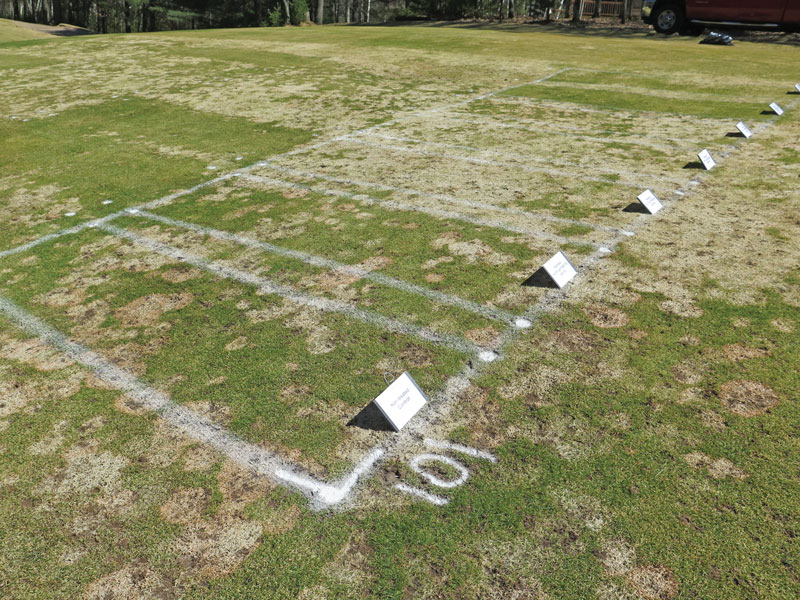
Photo by Paul Koch
Editor’s note: The following research project is in progress and was featured in the Cutting Edge section of GCM. This research project was funded by a grant to GCSAA from the Environmental Institute for Golf.
Timing snow mold fungicide applications in late fall can be difficult. Early applications may break down before snow cover arrives, and late applications may leave turf unprotected and snow-covered for weeks or months. Late-fall conditions can also vary dramatically, so applying snow mold product on the same date each year can result in variable disease control.
A three-year field study was initiated in 2015 to determine the optimal timing of snow mold fungicides at three locations in northern, central and southern Wisconsin. The northern site had the most consistent snow mold pressure during the winters of 2015-2016 and 2016-2017; the two treatment timings providing the most effective snow mold control in both years were immediately before significant snowfall and two weeks before expected snowfall.
Snow mold symptoms increased dramatically when applications were made four weeks or more before expected snow cover. Heating degree days (HDD) in both years were between 125 and 150, using a base temperature of 50 F at two weeks before expected snowfall. This HDD range may provide a guideline for superintendents to use in timing snow mold fungicide applications, though further study and validation is warranted before this range should be used.
In addition to the above study, a growth chamber study investigating the uptake of propiconazole at various temperatures was conducted to determine whether cooler temperatures impede fungicide uptake. Though the results have not yet been fully analyzed, to date, plant uptake of propiconazole does not appear to be significantly different at temperatures of 62 F, 50 F, 43 F and 32 F.
— Paul Koch, Ph.D., and Kurt Hockemeyer, University of Wisconsin-Madison
Teresa Carson is GCM’s science editor.